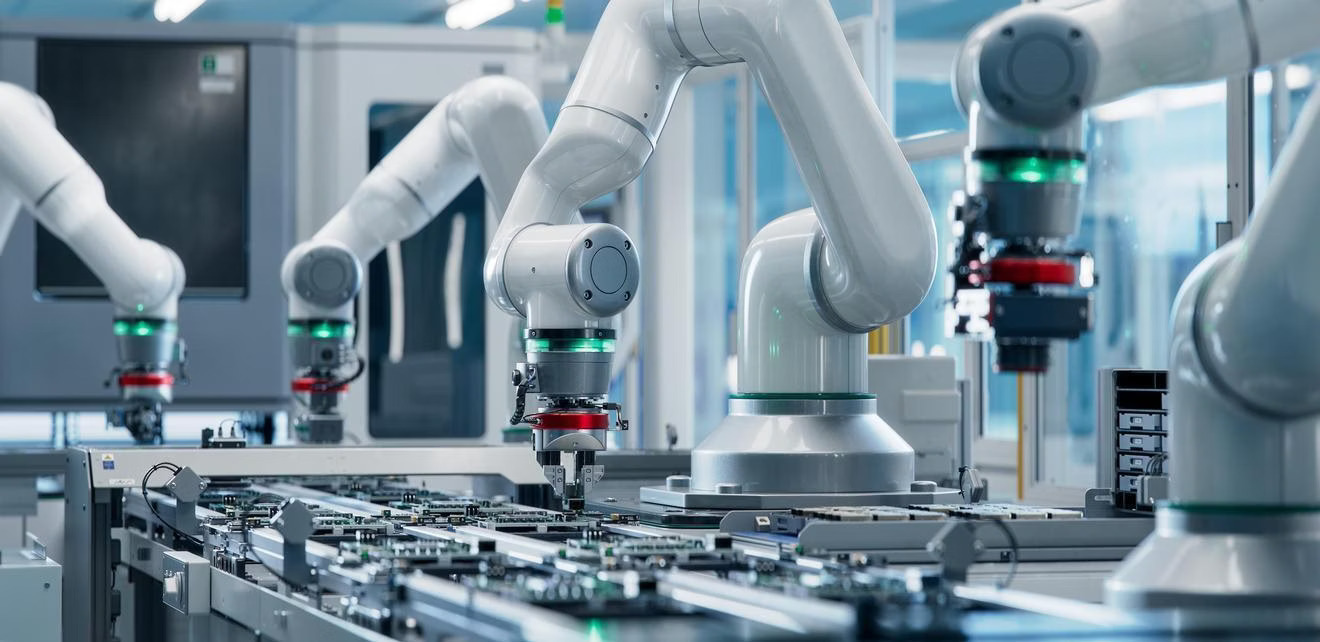Integration of IoT in automotive industry has unfolded many new ways for vehicle manufacturers. IoT technologies have helped global automobile and car makers to create innovative solutions. Driver-assistance tools, connected cars, in-vehicle information systems, navigation facilities, etc. are some popular examples of such solutions that have changed conventional views of the auto industry.
Manufacturing, engineering, transportation, automotive and real estate will be the beneficiaries of IoT app development. However, if we talk about the automotive industry then it would surely emerge as a bigger beneficiary of all these domains. A study suggests that the market for automotive IoT platforms is estimated to reach $11.3 billion at a CAGR of 33%.
Automotive IoT solutions comprise electronics, software, sensors, and connectivity devices. And with advancements in technologies, the use of IoT in automotive industry has increased rapidly. Here we will dive into different automotive IoT solutions that are transforming the way people interact with their vehicles.
IoT Solutions for Automotive Industry
The advent of the Internet of Things in automotive industry has opened many new avenues. Predictive maintenance, Wi-Fi capabilities, and advanced fleet management are some popular examples of how IoT-based solutions are shaping the key processes of the automotive sector.
If you are eager know the scope of IoT in automotive industry, take a look at some successful IoT use cases that are rapidly changing the entire business landscape –
1. Fleet Management
Fleet management can be consider a driving force for any business. Because fleet managers play a key role in monitoring and organizing vehicles for maintenance and performance. And the integration of the Internet of Things in the automotive sector has brought advancement in this vertical as well.
The usage of IoT in fleet management can help improve savings, manageability, and visibility in both cargo and passenger vehicles. Other than that, IoT-empowered fleet management solutions can predict the maintenance needs in advance. As a result, managers can fix or replace damaged parts before the problem gets worsened.
2. Real-time Telematics
IoT-empowered telematics refers to a long transmission of computerized data. It can help owners to keep an eye on their vehicles even from a remote location. Users can access a digital dashboard with the help of advanced IoT-driven apps. Such apps can help owners ensure that their car is secure, safe, and under surveillance at all times.
Other than this, real-time telematics offers Wi-Fi capabilities and smart infotainment systems. You can connect your smartphone, mp3 player, or a pen drive into your car’s system. Subsequently, there are some third-party apps that one can connect to its car’s system to play music, stream video, or attend calls directly through their steering.
3. Connected Cars
According to Allied Market Research estimation, the global market for connected cars is projected to reach $225.16 billion by 2027 at a CAGR of 17.1%. Such cars are connected over an IoT network known as CV2X (Cellular Vehicle to Everything). This network can connect vehicles and smart transport systems with each other.
In addition to this, connected cars facilitate faster data transmission and increase response time for drivers via enhanced vehicle communication. CV2X is further divided into four sub-categories that are mentioned below –
Also Read : Top Ways IoT Influences Healthcare Sector in Enhancing Environments
– Vehicle to Infrastructure
Vehicle to Infrastructure (V2I) connection refers to a network of vehicles and various road infrastructure. Such type of infrastructure consists of lane markings, traffic lights, and toll booths. It facilitates smooth traffic flows and assists drivers to avoid long lines at toll booths.
– Vehicle to Vehicle
Vehicle to Vehicle (V2V) connection can enable vehicles to share data within a proximate range. Such data covers location, dynamics, and speed. Furthermore, V2V connections are helpful in preventing accidents and allow emergency vehicles to sail smoothly through traffic.
– Vehicle to Network
Intelligent transports systems can connect with a network to alert drivers about an accident or change in weather conditions. Moreover, drivers can use voice commands to control music or the car’s GPS.
– Vehicle to Pedestrians
A pedestrian can also connect with the CV2X network through a mobile app. It can use this application to find nearby cabs and track their estimated time of arrival.
Automotive Maintenance System
IoT-empowered automotive systems assist the user to take the necessary steps to prevent sudden breakdowns. Such systems can alert drivers about probable malfunctions. It will send real-time notifications to the driver’s mobile about repairs and maintenance.
Moreover, the capabilities of predictive maintenance are applicable for a fleet as well. It also helps the user to track their vehicle’s performance and prevent unnecessary breakdowns in advance.
Concluding Lines
IoT, along with other disruptive technologies, has completely revolutionized the automobile industry. The solutions that have been discussed in this blog are the best examples of it. Furthermore, IoT has significantly revamped car inspection and maintenance capabilities.
In a nutshell, the Internet of Things is changing and transforming the Automotive industry. And with the enhancement in IoT technology, more refined automobile use cases will pop up that will completely revolutionize the production process.





